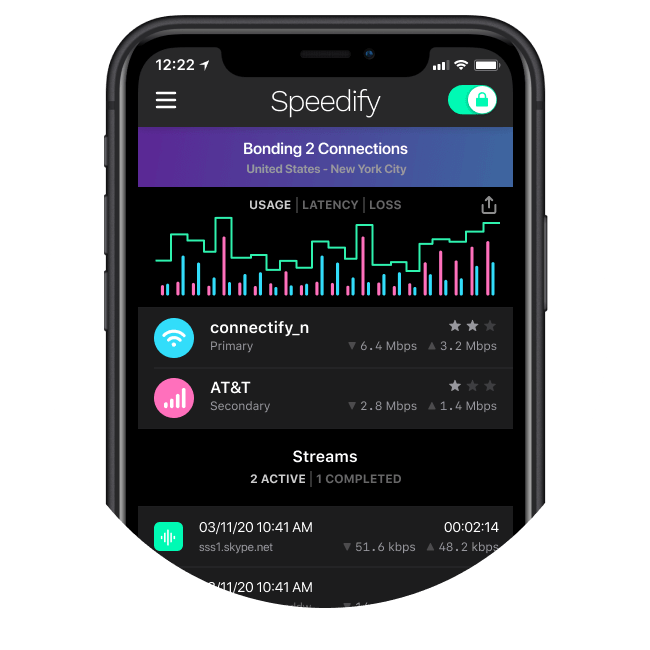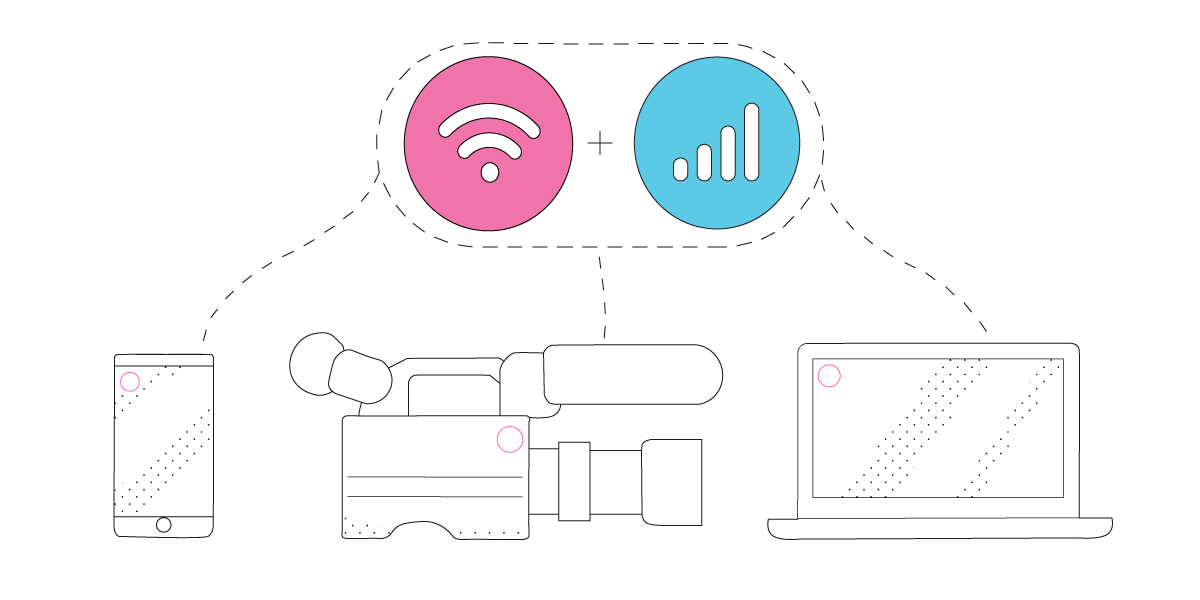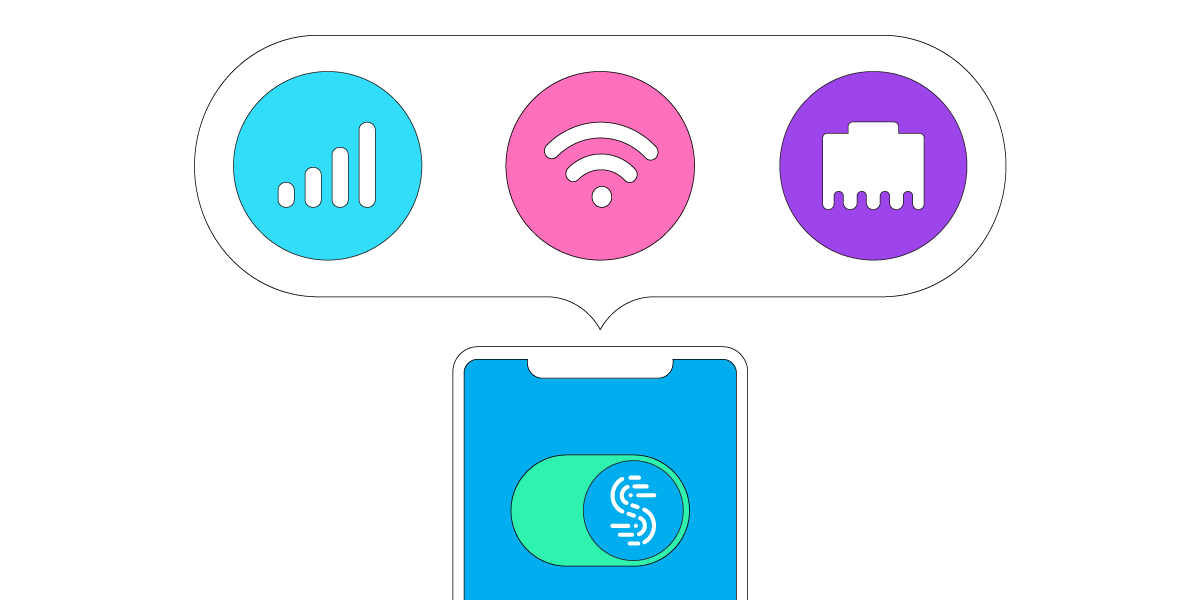72 Remote Work Statistics & Trends You Need to Know in 2021


Remote Work in 2020 - What Happened
In 2020, the pandemic forced many of us to work remotely. It was either that, or have a workforce that wouldn’t be able to work at all as cases grew around the world.
Going into it, many companies expected challenges. What they found was a resilient workforce.
Employees expected to be less productive, but found a way to thrive despite many technological, professional and personal challenges.
Contents
- New Year, New Trends - How 2021 and Beyond Looks Like for Remote Work
- Importance of Good Internet when Working Remotely
- Bad Internet and Streamergencies (Streaming Emergencies) Affecting Remote Work
- Efficiency vs. Productivity
- Remote Work Trends: Employee Hopes for the Future
- The Changing Workday for Remote Workers
- Support Needed to Keep Remote Employees Productive
- Changing Locations Because of Remote Work
- Employers Surprised by Remote Work Productivity
- Employer’s Views on Remote Work’s Future
- Employers Fear Losing Company Culture and Control Over Employees in the Remote Work Landscape
- A Remote Workforce Also Creates Cybersecurity worries
New Year, New Trends - How 2021 and Beyond Looks Like for Remote Work
The future of remote work is less clear as the pandemic’s end draws near. Employees want to work remotely more than employers want them to have the privilege. Battles will be fought internally at many companies.
One of the most popular remote work trends these days (the most likely scenario) is for hybrid office environments to become the norm, with employees working remotely several days a week. And there will be far greater numbers of workers that are 100% remote than before the pandemic.
When that near future arrives, we must be prepared, and finish ironing out all of the kinks of remote work. Better internet, no streamergencies, the right hardware and software at home, a better work/life balance, etc. If we can make it as seamless as working in the office, then working remotely will continue to thrive in a post-pandemic world.
Here are all of the remote work statistics we’ve gathered to understand what’s happening now and what we can expect.
General Remote Work Trends and Stats
Importance of Good Internet when Working Remotely
- 48% of people who are working full or part time are working from home. (Speedify State of Streamergency)
- 52% of respondents to a large annual survey choose to work from home, and of those, 58% cited Covid-19 risks while commuting or working as a reason. (Edelman Trust Barometer)
- 74% of people from households with an annual income of over $200K often use the internet at home for work, compared to only 20% of those making between $10,000 to $24,999. (Speedify)
- 94% of consumers say it is very or extremely important to have a reliable internet connection. 100% of remote workers believe it’s important. (Speedify)
- The general public is satisfied with their home internet provider, but the majority (61%) are only somewhat satisfied or have some degree of frustration with it. (Speedify)
- More than two-thirds (68%) of Americans’ productivity has been impacted to some degree due to internet speed or stability issues. (Speedify)
- More than one in ten (11%) feel it has impacted them to a great extent. Remote workers are 55% more likely to feel that way. (Speedify)
- Remote workers are much more likely to feel they have been impacted to some degree, with 77% indicating that. (Speedify)
- The top 3 activities heavy internet users use home internet for are:
- Streaming videos online - 88%
- Video conferencing - 72%
- Work - 71% (Speedify)

- Rural internet users are more than twice as likely to not have more than one choice of internet provider in their area compared to urban dwellers. (Speedify)
- Among Americans, Zoom is the most used video conferencing provider, with 72% of respondents having used it. Remote workers are even more likely to have used it, with 88% indicating that. (Speedify)
- Most people (60%) are satisfied with their video conferencing provider, but few are very satisfied (only 14%), indicating room for improvement. (Speedify)
Bad Internet and Streamergencies (Streaming Emergencies) Affecting Remote Work
- 88% of Americans experience some degree of nervousness or frustration in their internet connection’s stability. (Speedify)
- Rural internet users are nearly two times more likely to feel dissatisfied with their home internet compared to urban users. (Speedify)
- Rural internet users are more than 2X more likely to very frequently feel frustrated or nervous with their stability compared to urban users. (Speedify)
- The top 3 frustrations respondents cited if the internet was unstable:
- Talking to friends or family - 93% would feel some degree of frustration
- Video conferencing - 92% would feel some degree of frustration
- Hosting a virtual event - 85% would feel some degree of frustration (Speedify)
- The internet has failed or performed poorly for nearly 1 in 3 (32%) users who use video conferencing. (Speedify)
- Only 14% strongly disagree that it has performed poorly or failed. (Speedify)
- Rural users are 66% more likely to believe it has compared to urban users. (Speedify)
- More than half of workers feel their organizations aren’t doing enough to ensure they have fast or stable internet. (Speedify)
- Younger workers are much more likely to believe both, with 72% of 18-29 year olds believing organizations aren’t doing enough to give them fast internet. (Speedify)
- Most (57%) remote workers aren’t using VPNs. However, ones who do are satisfied, with 73% of VPN users indicating that. Yet nearly half (44%) feel like their speeds are slower when using a non-channel bonding VPN. (Speedify)
Employee Views on Remote Work in 2021
Efficiency vs. Productivity
- 77% of remote workers are satisfied with their work from home arrangement. (Speedify)
- 67% of employees say that they have been working more efficiently when working remotely. (Nintex)
- 48% of workers reported a decrease in productivity while working out of their homes. 35% of workers believed they produced more due to remote work. And 17% said it stayed the same. (Blind)
- 70% of those surveyed claimed that undergoing remote work amid the coronavirus threat was a mostly positive situation. (Nintex)
- 67% of employees believe they're getting work done "more efficiently since transitioning to full-time remote" but also said they could benefit from "additional flexibility, better tech equipment, and easy-to-used automation software." (Nintex)
- The majority of employees (63%) feel as though they are more productive working remotely than they are in a traditional office setting. (Lenovo)
- Compared to June 2020, more employees feel they’re more productive now than they were before the pandemic (34% vs. 29%). Yet roughly two-thirds do not feel more productive.(PwC)
- A majority of employees surveyed say their companies have been successful in finding ways to make WFH more productive. (PwC)
- One in three remote workers cited an enhanced work-life balance as a reason they prefer to keep working from home, while 26% feel they are more productive at home. (Edelman)
- Not many office workers have returned to their desks. By the end of October, only one in 10 Manhattan workers had returned. (Partnership for New York City)
- By mid-November, only a quarter of employees nationwide had returned. Key-card data shows the cities that are leading in return-to-work, such as Dallas, still have fewer than half of workers back. (Kastle Systems)
Remote Work Trends: Employee Hopes for the Future
- More than half (52%) of workers expect to continue in this new normal workplace, even when restrictions are lifted. (Lenovo)
- Over half of employees (55%) would prefer to be remote at least three days a week once pandemic concerns recede. (PwC)
- 72% of home-buyers expect their remote work arrangement to continue after the pandemic subsides. (Redfin)
- American employees have invested in technology to work remotely. They spent $348, on average, for technology improvements while working remotely during the pandemic. 40% increased tech spending, and the American figure is $70 higher than the global average. (Lenovo)
- 87% of employees believe the office is important for collaborating with team members and building relationships — their top-rated needs for the office. (PwC)
- Employees who are more productive working remotely are less likely to envision being back in the office earlier. 55% of those feeling less productive are already back in the office or expect to spend at least half of their time in the office by April 2021, compared with just 36% of respondents who report being more productive during the pandemic. (PwC)
- Over half of employees (55%) would like to be remote at least three days a week. (PwC)
- Younger employees are less likely to want to work remotely for most of the week, but the majority still prefers it. 34% of respondents, aged 18 to 24, are more likely to prefer a remote schedule of one day a week or less, compared to 20% of all respondents. (PwC)
The Changing Workday for Remote Workers
- The average workday lengthened by 48.5 minutes in the weeks following stay-at-home orders across the US in March. Meetings and internal email activity both increased. (National Bureau of Economic Research (NBER))
- Nearly 70 percent of professionals who work remotely because of the pandemic say they now work on the weekends, and 45 percent say they regularly work more hours during the week than they did before. (Robert Half)
- Working parents are more likely to work weekends and more than eight hours per day than those without children. Men are more likely than women to report working on weekends and putting in 40-plus hour workweeks. And more workers under the age of 40 said they usually work weekends and more than eight hours per day than those older than 40. (Robert Half)
Support Needed to Keep Remote Employees Productive
- Among ways of making employees more productive, flexibility needed to manage family matters is rated highest: 79% of employees say it has been a success. (PwC)
- Childcare is still a sticking point, however. 81% of executives believe their company has been successful in extending benefits for childcare, but less than half (45%) of employees say the same. (PwC)
- Women are less likely to say childcare measures have been a success — 41% compared with 49% of male respondents. (PwC).
- Female respondents are slightly more likely to prefer three or more days of remote work than males: 58% vs. 51%. (PwC)
Changing Locations Because of Remote Work
- One-third of home-buyers—34%—have already moved to a different city or area due to remote work, and just as many—33%—would like to. (Redfin)
- 30% of home-buyers said they have already moved less than 50 miles away from their former home and 23% would like to move less than 50 miles away. Just 4% of respondents have moved more than 50 miles away and 10% would like to move more than 50 miles away. (Redfin)
- Twenty-seven percent of respondents to the survey believe the current trend of Americans moving from expensive coastal areas to relatively affordable parts of the country will make the country less divided, and the same share believe it will make the country more divided. (Redfin)
Employer Expectations on Remote Work in 2021
Employers Surprised by Remote Work Productivity
- 83% of employers say the shift to remote work has been successful for their company, up from 73% in June 2020. (PwC)
- More executives now agree that average employee productivity has improved - 52% agree now compared to 44% in June. (PwC)
- Less than one in five executives want to return to the office as it was pre-pandemic. (PwC)
Employer’s Views on Remote Work’s Future
- 90% of HR professionals said their organizations planned to allow employees to work remotely at least part of the time even after a vaccine is widely adopted. (Gartner)
- 65% of HR professionals said their organizations would continue to offer employees scheduling flexibility. (Gartner)
- However, just 13% of executives are prepared to let go of the office for good. (PwC)
- By July 2021, 75% of executives anticipate that at least half of office employees will be working in the office. In comparison, 61% of employees expect to spend half their time in the office by July. (PwC)
- 87% of executives expect to make changes to their real estate strategy over the next 12 months, such as consolidating office space in premier locations and/or opening more satellite locations. (PwC)
- Over 60% of executives expect to raise spending on virtual collaboration tools and manager training. Half plan to invest more in areas that support hybrid working models, including hoteling apps (50%) and communal space in the office (48%). (PwC)
Employers Fear Losing Company Culture and Control Over Employees in the Remote Work Landscape
- Most executives (68%) believe that people should be in the office at least three days a week to maintain a distinctive company culture, once the pandemic is no longer a concern. (PwC)
- Moreover, 65% believe the office is “very important” to increasing employee productivity. (PwC)
- Over half of executives also consider the office very important for employee collaboration, providing spaces to meet with clients and enabling the company culture. (PwC)
- About half of IT leaders (49%) said they'd "prefer" employees to come back to the traditional office on a full-time basis "once a COVID-19 vaccine is in place." (Tech Domains)
- More than three-quarters of IT leaders (79%) said that the coronavirus pandemic has "created a digital divide amongst employees." (Tech Domains)
- About half of IT leaders (47%) said they fired an employee "due to lack of performance and productivity in WFH or remote environments." (Tech Domains)
- About four-in-10 IT leaders (42%) said their teams were "less engaged since the onset" of the coronavirus pandemic. (Tech Domains)
- Nearly nine-in-10 IT leaders (85%) said they were planning to "track employee productivity/performance (when working remotely) more closely in 2021. (Tech Domains)
A Remote Workforce Also Creates Cybersecurity worries
- Restricting access to sensitive information is at the top of the list of priorities for IT admins. VPNs are a common tool used to restrict access, and over 70 percent of companies surveyed are already using VPNs to some degree. (ManageEngine)
- Because of remote work, IT admins need to scan more frequently for vulnerabilities and loopholes. 40% of businesses are scanning their networks for vulnerabilities everyday. (ManageEngine)
- When it comes to abrupt infrastructure changes that have been triggered by remote work, about 48% of IT admins are worried about compliance policy violations and 30 percent answered ransomware. (ManageEngine)
- Most organizations haven’t trained IT staff appropriately to mitigate cyberattacks. Only a little over half, 57%, have done so, which highlights that many businesses still don’t take the threat of cyberattacks seriously. (ManageEngine)

Connectivity is the key to productive remote work
If you want to be more productive, start considering how you will achieve blazing fast internet connections with superb network quality, and find the right devices, equipment and tools that will help you collaborate, video conference and take work anywhere.
Together, we can make the Next Normal better than the old.
Meet Speedify
The only VPN with Channel Bonding
A streamers best friend

17841700 streams saved
Whether you live stream for a living or simply join the occasional Zoom Conference, Speedify can provide a more stable and reliable streaming experience. By default Speedify utilizes our revolutionary Streaming Mode which automatically prioritizes audio and video streams and dynamically adjusts to network conditions so you can stop asking "Can you Hear Me?" and start streaming at the speed of all your connections combined!
Less buffering, more browsing

Multiple connections, maximum performance
Speedify can bond any combination of Internet connections and will intelligently distribute your online traffic between them for optimal performance. Plus, if you get disconnected from one of your connections in the middle of an important video call or file transfer, Speedify will seamlessly failover to your other working Internet connection(s) without skipping a beat.
Combine connections
Browse, stream, watch, and play at the speed of all your Internet connections combined.
Enhanced streaming
Speedify automatically prioritizes real-time streaming traffic such as video calls and VoIP calls, live streaming, and gaming.
Extreme encryption
Speedify uses the latest encryption standards to secure your data. Stay safe when browsing on any network including public Wi-Fi hotspots.
Use on all your devices
We have apps for all major platforms including Windows, macOS, Linux, iOS, and Android.
Access the global internet
We have servers in more than 50 locations around the globe to mask your IP address and protect your browsing activities.
Ultimate privacy
We don’t record, monitor, store, log, or share anything you do.
Download Speedify
Speedify is the only app that combines your wifi, cellular, wired, and even your friend’s phone signals – into one ultra-fast and super secure link that keeps you all connected for the best possible live streaming, video calling, or just posting to your favorite app.
Subscribe to Speedify on YouTube
Get news, success stories, and our weekly livestreaming show Speedify LIVE! Tune in to chat and ask questions or to yell at us if that makes you happy. We're from Philly, we can take it.




